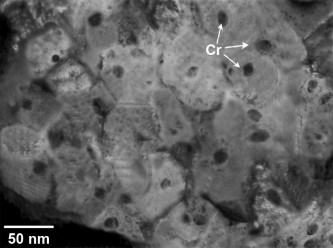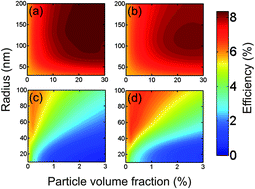Artículos SCI
2014
2014
Materiales Ópticos Multifuncionales
Fully stable numerical calculations for finite one-dimensional structures: Mapping the transfer matrix method
Luque-Raigon, JM; Halme, J; Miguez, HJournal of Quantitative Spectroscopy and Radiative Transfer, 134 (2014) 9-20
Show abstract ▽

We design a fully stable numerical solution of the Maxwell's equations with the transfer matrix method (TMM) to understand the interaction between an electromagnetic field and a finite, one-dimensional, non-periodic structure. Such an exact solution can be tailored from a conventional solution by choosing an adequate transformation between its reference systems, which induces a mapping between its associated TMMs. The paper demonstrates theoretically the numerical stability of the TMM for the exact solution within the framework of Maxwell's equations, but the same formalism can efficiently be applied to resolve other classical or quantum linear wave-propagation interaction in one, two, and three dimensions. This is because the formalism is exclusively built up for an in depth analysis of the TMM's symmetries.
Febrero, 2014 | DOI: 10.1016/j.jqsrt.2013.10.007
Materiales Ópticos Multifuncionales
Nanometer-Scale Precision Tuning of 3D Photonic Crystals Made Possible Using Polyelectrolytes with Controlled Short Chain Length and Narrow Polydispersity
Wang, Z; Calvo, ME; Masson, G; Arsenault, AC; Peiris, F; Mamak, M; Miguez, H; Manners, I; Ozin, GAAdvanced Materials Interfaces, 1 (2014) Art. 1300051
Show abstract ▽

Nanometer-scale tuning of the optical properties of prefabricated photonic crystals is achieved via layer-by-layer assembly of polyelectrolytes in the interstitial spaces of the photonic lattice. The key to the approach is using polyelectrolytes with controlled short chain lengths. This ensures they do not block the air voids, thereby maintaining uniform coating and thus precise and reproducible optical
Febrero, 2014 | DOI: 10.1002/admi.201300051
Reactividad de Sólidos - Materiales y Procesos Catalíticos de Interés Ambiental y Energético
Spinodal decomposition and precipitation in Cu–Cr nanocomposite
Sheibani, S; Heshmati-Manesh, S; Ataie, A; Caballero, A; Criado, JMJournal of Alloys and Compounds, 587 (2014) 670-676
Show abstract ▽

In this study, spinodal decomposition and precipitation mechanism of mechanically alloyed supersaturated Cu–3wt.%Cr and Cu–5wt.%Cr solid solutions was investigated under nonisothermal aging. Decomposition mechanism and kinetics were studied using differential scanning calorimetry (DSC) and X-ray diffraction (XRD) techniques. Also, the microstructure was characterized by transmission electron microscopy (TEM). Effect of Al2O3 reinforcement on the aging kinetics was also evaluated. It was found that Cu–3wt.%Cr and Cu–5wt.%Cr solid solutions undergo spinodal decomposition at initial stages of ageing. However, decomposition mechanism was changed to nucleation and growth by the aging progress. The aging kinetics for the Cu–Cr/Al2O3 composition appeared to be slightly faster than that for Cu–Cr, since the ageing activation energy is decreased in presence of Al2O3 nano-particles. This behavior is probably due to the higher dislocation density and other structural defects previously produced during ball milling. A detailed comparison of the DSC results with those obtained by TEM, showing good consistency, has been presented. The average size of Cr-rich precipitates was about 10 nm in the copper matrix.
Febrero, 2014 | DOI: 10.1016/j.jallcom.2013.11.019
Química de Superficies y Catálisis
Gold supported on CuOx/CeO2 catalyst for the purification of hydrogen by the CO preferential oxidation reaction (PROX)
Laguna, OH; Hernandez, WY; Arzamendi, G; Gandia, LM; Centeno, MA; Odriozola, JAFuel, 134 (2014) 9-20
Show abstract ▽

Hydrogen produced from the conversion of hydrocarbons or alcohols contains variable amounts of CO that should be removed for some applications such as feeding low-temperature polymer electrolyte membrane fuel cells (PEMFCs). The CO preferential oxidation reaction (PROX) is particularly well-suited for hydrogen purification for portable and on-board applications. In this work, the synthesis and characterization by XRF, BET, XRD, Raman spectroscopy and H2-TPR of a gold catalyst supported on a copper−cerium mixed oxide (AuCeCu) for the PROX reaction are presented. The comparison of this catalyst with the copper–cerium mixed oxide (CeCu) revealed that the experimental procedure used for the deposition of gold gave rise to the loss of reducible material by copper lixiviation. However, the AuCeCu solid was more active for CO oxidation at low temperature. A kinetic study has been carried over the AuCeCu catalyst for the PROX reaction and compared with that of the CeCu catalyst. The main difference between the models affected the contribution of the CO adsorption term. This fact may be related to the surface electronic activity produced by the interaction of the cationic species in the AuCeCu solid, able to create more active sites for the CO adsorption and activation in the presence of gold.
Febrero, 2014 | DOI: 10.1016/j.fuel.2013.10.072
Materiales Ópticos Multifuncionales
Dye sensitized solar cells as optically random photovoltaic media
Galvez, FE; Barnes, PRF; Halme, J; Miguez, HEnergy & Environmental Science, 6 (2014) 1260-1266
Show abstract ▽

In order to enhance optical absorption, light trapping by multiple scattering is commonly achieved in dye sensitized solar cells by adding particles of a different sort. Herein we propose a theoretical method to find the structural parameters (particle number density and size) that optimize the conversion efficiency of electrodes of different thicknesses containing spherical inclusions of diverse composition. Our work provides a theoretical framework in which the response of solar cells containing diffuse scattering particles can be rationalized. Optical simulations are performed by combining a Monte Carlo approach with Mie theory, in which the angular distribution of scattered light is accounted for. Several types of scattering centers, such as anatase, gold and silver particles, as well as cavities, are considered and their effect compared. Estimates of photovoltaic performance, insight into the physical mechanisms responsible for the observed enhancements, and guidelines to improve the cell design are provided. We discuss the results in terms of light transport in weakly disordered optical media and find that the observed variations between the optimum scattering configurations attained for different electrode thicknesses can be understood as the result of the randomization of the light propagation direction at different depths within the active layer. A primary conclusion of our study is that photovoltaic performance is optimised when the scattering properties of the film are adjusted so that the distance over which incident photons are randomized is comparable to the thickness of the film. This simple relationship could also be used as a design rule to attain the optimum optical design in other photovoltaic materials.
Febrero, 2014 | DOI: 10.1039/C3EE42587H
- ‹ anterior
- 284 of 420
- siguiente ›














